Competitive dynamics of the cell phone industry
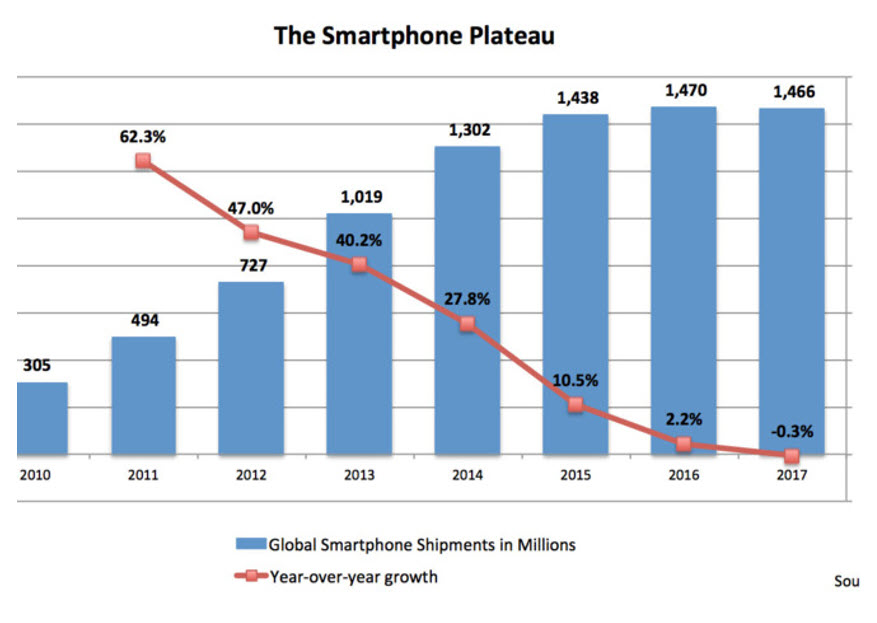
The cell phone industry is dynamic and brutal because the leading brand can be toppled off by competitors in a short period of time.
Because of the ever-growing technological development, a huge brand can become irrelevant in the market if they stop innovating, or even by just slowing down on their technological advancement by a step.
The story of Nokia’s downfall in the industry is often used as an example. Once a dominating brand, the Finnish company was quickly overtaken by Apple when it launched its iPhone series during the late 2000s. The first iPhone was released in 2007 and a new model for the line was consistently released annually since then.
Nokia tried to catch up with Apple by venturing further into the touchscreen technology for mobile phones. The ‘first’ touchscreen smartphone by the company is Nokia N8, but it was released in 2010, about 3 years too late. Prior to that, Nokia did release a touchscreen smartphone, the N85 model in 2008, but it had a limited touchscreen interface.
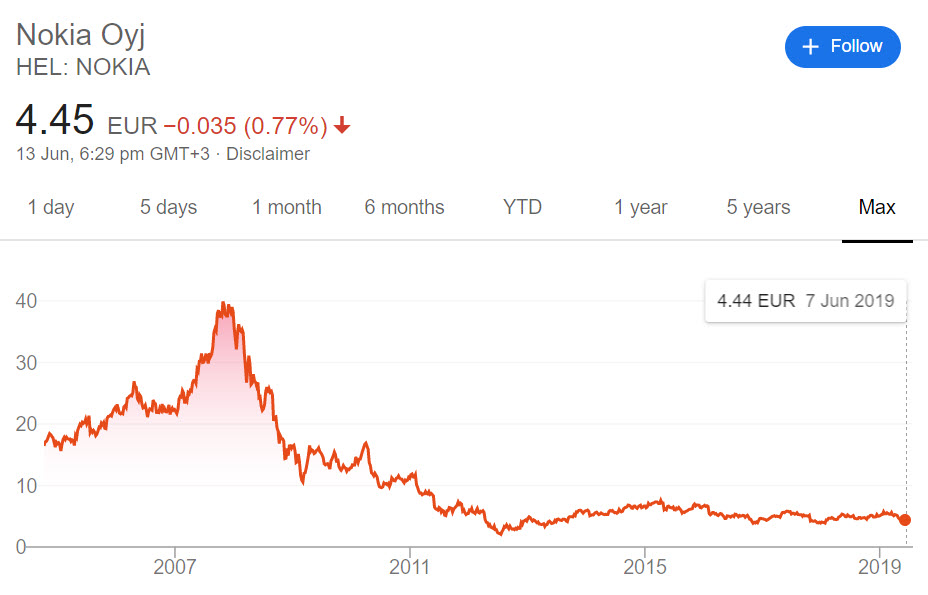
The decline in market performance led to the decline of Nokia’s share price. Nevertheless, Nokia was not the first to suffer in the brutal and dynamic cell phone industry. Before Nokia, there were other leading brands like Siemens and Motorola.
Today, Apple is a prominent brand in the cell phone industry, but not the dominating brand. The American multinational technological company face numerous competitors, primarily from Asian companies like Samsung, Sony, Huawei, Xiaomi, Oppo and etc.

Consequently, the industry marketplace was affected by the high number of competitors. Based on data from International Data Corporation (IDC), the global smartphone shipment reached its plateau in 2016. A decline of 0.3% in global smartphone shipments happened in 2017.
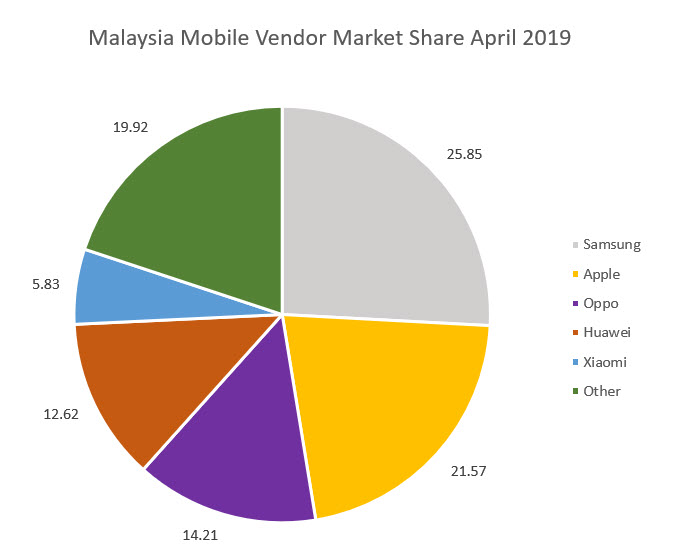
According to gsstatcounter.com, the leading mobile phone brand in Malaysia was Samsung in April 2019. The Korean brand took up 25.85% of the local smartphone market share. Apple is not far behind with 21.57% of the market share, while Huawei was at 12.62%.
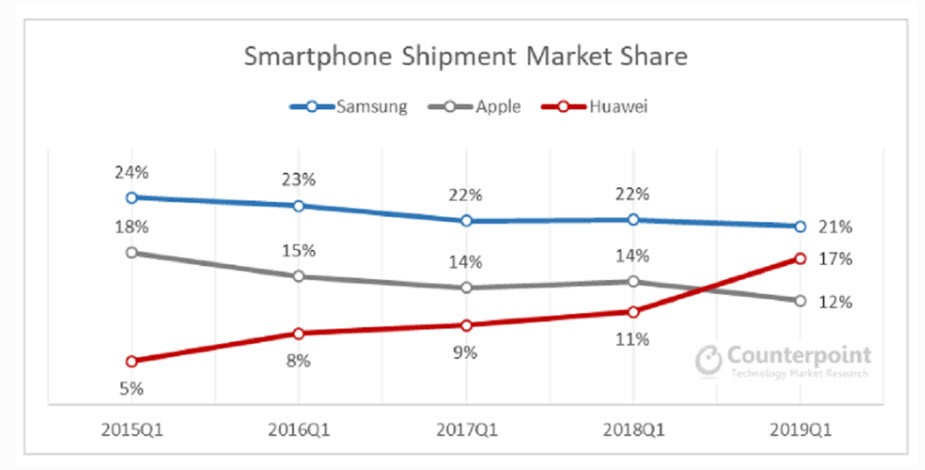
Globally, Huawei overtook Apple in market share during the first quarter of 2019 based on the statistics by Counterpoint Research. It happened amidst of the US-China trade war which led to Google banning Huawei. Thus, the China company will no longer be using Android mobile operating system as it was developed by Google.
Upon further inspection, Apple’s market share has been declining since 2015, while Huawei is improving at a faster pace.
There is an ongoing negative sentiment on Apple products; they are overpriced while not having the latest technology in their specification. Thus, numerous consumers went for the alternatives.
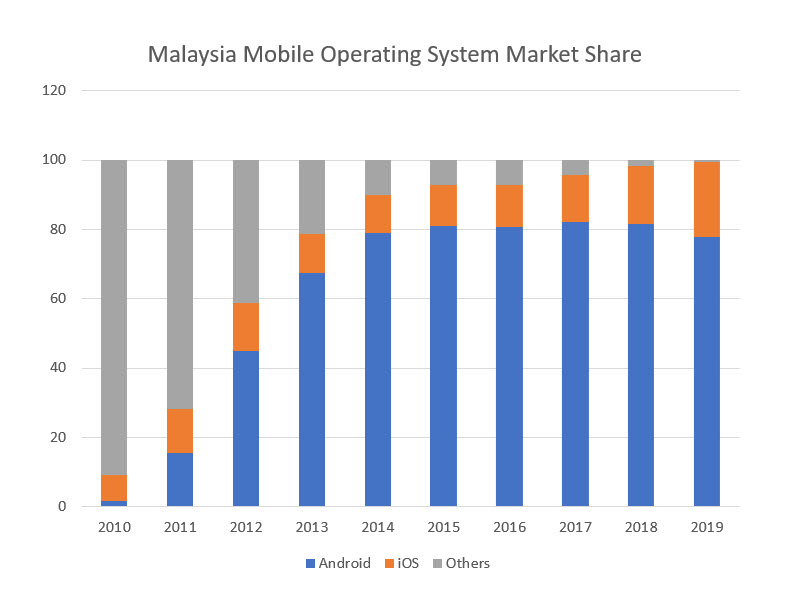
In Malaysia, Android’s market share expanded swiftly over the past decade, while iOS users increased at a comfortable pace.
This is because Android phones have variety of series and price range. For example, Samsung Galaxy has multiple series: S (high-end), A (mid-range), J (mid-range), M (low tier) and others. Whereas, Apple only has the iPhone series where the variety are in the specs and price range. Nonetheless, the lowest price of the latest Apple phone is iPhone XR (64 GB) which cost RM3,599 according the official Apple Malaysia website.
Therefore, other smartphone brands that uses Android, provide a wider range in pricing, contributing to the rapid expansion of Android’s market share in Malaysia.
Currently, Huawei is developing its own OS after the Google ban, reported to be called HongMeng OS in China and Oak OS elsewhere. On the downside, there is an allegation that the China government is spying on the people through Huawei.
Plus, the race to 5G will be a game changer to the cell phone industry. What do Malaysians think about the current smartphone war? Which company will be the leading brand in the coming years?

